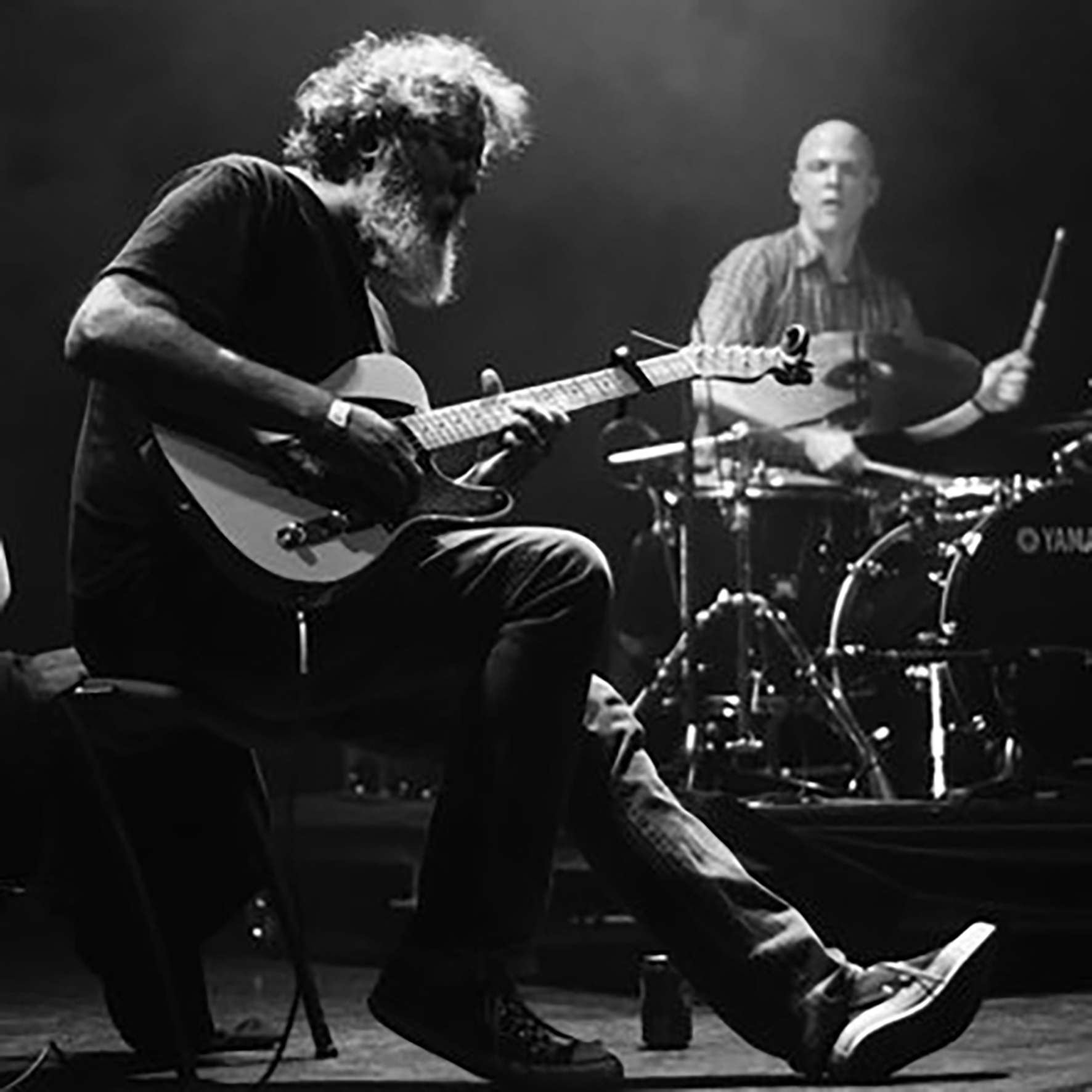 In theory, any album recorded by the duo of Chris Corsano and Bill Orcutt should be an instant Album of the Year candidate for me, as the pair are easily among my favorite musicians on the planet. However, 2018’s explosive Brace Up! was not quite my thing, calling to mind Orcutt's earlier and viscerally cacophonous Harry Pussy days. I have no doubt that seeing the duo live during that period would have either torn off my head or melted my face, but that album is not the one I reach for when I have an Orcutt craving. Happily, the opposite is true of this latest convergence of the two fiery improv iconoclasts, as Made Out of Sound resembles one of Orcutt's more recent solo albums organically intertwined with some oft-incendiary free drumming. Despite being generally more melodic and less feral than its predecessor, however, the more nuanced Made Out of Sound is nevertheless a radical and intense recording in its own right. It is truly rare to encounter such seemingly effortless and fluid chemistry between two artists with such instantly recognizable and attention-grabbing aesthetics.
In theory, any album recorded by the duo of Chris Corsano and Bill Orcutt should be an instant Album of the Year candidate for me, as the pair are easily among my favorite musicians on the planet. However, 2018’s explosive Brace Up! was not quite my thing, calling to mind Orcutt's earlier and viscerally cacophonous Harry Pussy days. I have no doubt that seeing the duo live during that period would have either torn off my head or melted my face, but that album is not the one I reach for when I have an Orcutt craving. Happily, the opposite is true of this latest convergence of the two fiery improv iconoclasts, as Made Out of Sound resembles one of Orcutt's more recent solo albums organically intertwined with some oft-incendiary free drumming. Despite being generally more melodic and less feral than its predecessor, however, the more nuanced Made Out of Sound is nevertheless a radical and intense recording in its own right. It is truly rare to encounter such seemingly effortless and fluid chemistry between two artists with such instantly recognizable and attention-grabbing aesthetics.
In wrestling with how to best describe Orcutt's playing on this album, my mind predictably kept returning to the phrase Ira Gitler once famously used to describe John Coltrane's aesthetic: "sheets of sound." In Orcutt's case, however, most of Made Out of Sound feels more like sheets of rain falling on a pond: individual drops constantly and rapidly changing the rippling patterns with each small splash. There is also the potential to be startled by a surprise duck. Translating that into more musical terms, the drops are the ringing open strings, the rippling pond is a mass of constantly evolving harmonies and dynamics, and the surprise duck is the snarling, snapping, and scrabbling flurries of notes that Orcutt sometimes unleashes. Notably, that metaphorical pond scene also includes a dangerously intense wave machine in the form of Corsano's whirlwind free-form drumming.
Given their collaborative history, it is hardly surprising that the duo's interplay feels so natural at this stage, yet the best moments of the album feel so uncannily instinctive and spontaneous that the wash of sound almost seems like a churning, heaving living organism. Remarkably, the duo recorded their parts separately from different coasts, which makes the “live” intensity and fluid interplay feel almost miraculous, but also allowed Orcutt more space for nuance than usual (as well as the ability to overdub a second guitar track). If I was forced to choose a favorite piece, I would probably pick one of the more melodic ones like the wistful "Some Tennessee Jar" or clattering, tumbling pathos of "Man Carrying Thing," but the whole damn album feels akin to witnessing a pair of magicians flawlessly perform one dazzling trick after another (the trick in each case being "distilling primal/art-damaged blues into a pure, expressionist catharsis that transcends conventional scales, chords, melodies, rhythms, and genre tropes"). Every single one of these pieces feels like a vivid eruption of pure, direct emotion that leaves compelling music in its wake. This is a canonical Bill Orcutt album.
Samples can be found here.


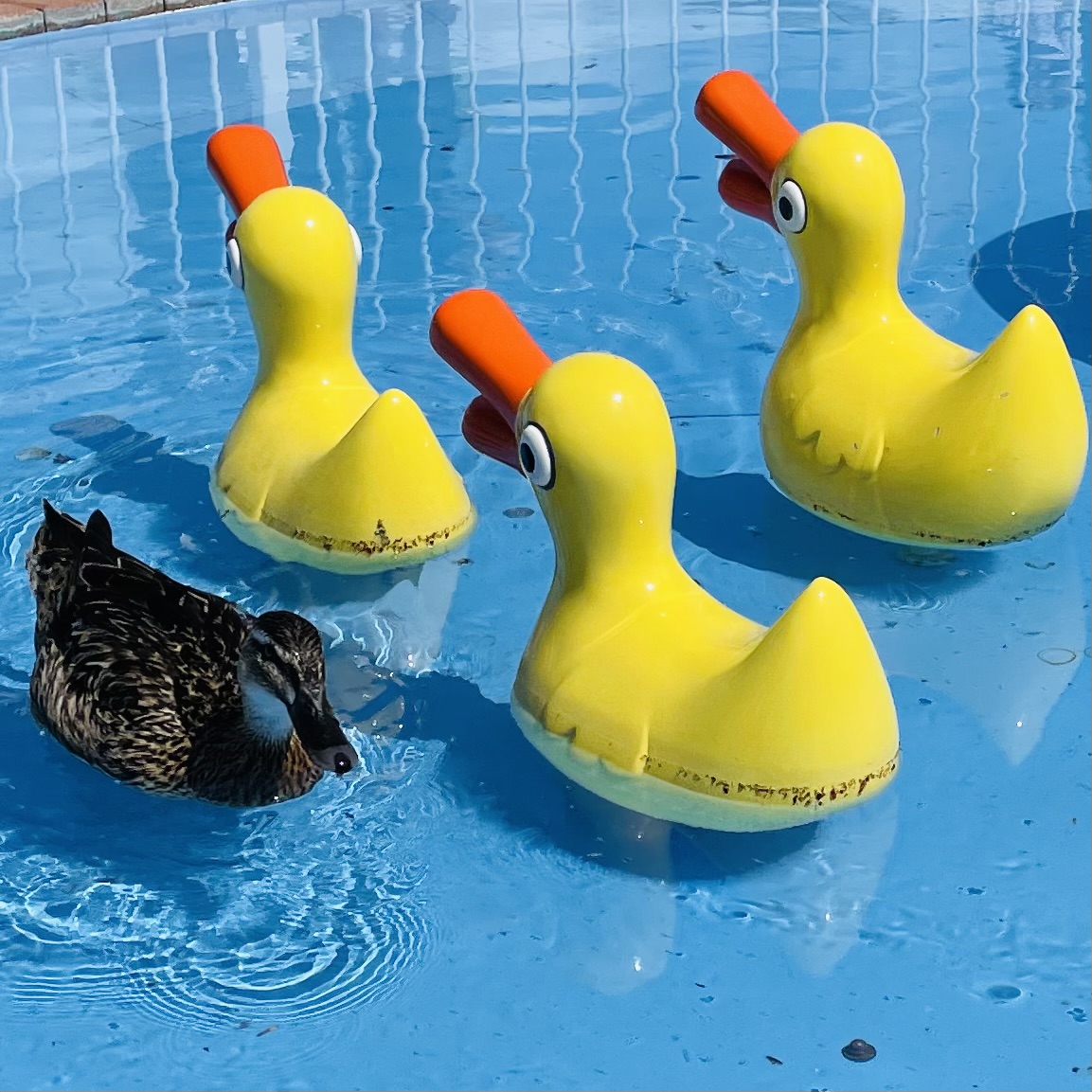
 I never delved too deeply into the New Weird America scene during its heyday, so I have probably heard far fewer Sunburned Hand of the Man albums than most people who are constantly seeking out freaky underground sounds. Consequently, I have no idea if there is some CDR from like 2002 lurking among the free rock collective's previous 120+ releases that explores roughly the same stylistic terrain as Pick a Day to Die. I would be surprised if there was though, as this return (of sorts) feels unusually focused, tight, and muscular for the band. To my ears, that approach suits Sunburned Hand quite well, as the collective churn out some impressively killer psychedelia on this release (among other things). That said, they still remain every bit as unapologetically eclectic, perplexing, and occasionally self-sabotaging as ever, resembling a bunch of gleefully mischievous Western Massachusetts underground luminaries (with amazing record collections) spinning a wheel to determine whether they want to channel Captain Beefheart, classic krautrock, Dr. John, or some cool folk, prog, or psych obscurity with each fresh song. Despite that (or, more likely, because of it), this is an unusually fun, strong, and memorable release.
I never delved too deeply into the New Weird America scene during its heyday, so I have probably heard far fewer Sunburned Hand of the Man albums than most people who are constantly seeking out freaky underground sounds. Consequently, I have no idea if there is some CDR from like 2002 lurking among the free rock collective's previous 120+ releases that explores roughly the same stylistic terrain as Pick a Day to Die. I would be surprised if there was though, as this return (of sorts) feels unusually focused, tight, and muscular for the band. To my ears, that approach suits Sunburned Hand quite well, as the collective churn out some impressively killer psychedelia on this release (among other things). That said, they still remain every bit as unapologetically eclectic, perplexing, and occasionally self-sabotaging as ever, resembling a bunch of gleefully mischievous Western Massachusetts underground luminaries (with amazing record collections) spinning a wheel to determine whether they want to channel Captain Beefheart, classic krautrock, Dr. John, or some cool folk, prog, or psych obscurity with each fresh song. Despite that (or, more likely, because of it), this is an unusually fun, strong, and memorable release. When I first discovered music that expanded commercial radio's boundaries, much of it was found via word of mouth from like-minded people. Music discovery is more accessible these days, but word of mouth is still a powerful discovery tool. I likely wouldn't have learned about this one were it not for a like-minded Facebook group. Swansea musician Edward Hancock's project, The Brain Thunk When It Thailed is the culmination of a host of genres stirred together in a large DIY pot. Honed with a lo-fi aesthetic and honoring experimentation from generations, the album calls up homages to punk, doom, jazz, garage, blues, R&B, and psychedelia. With heavy use of panning and mixing on a simple Portastudio, the album succeeds in sounding like a spaced-out sixties band. That's where the fun begins.
When I first discovered music that expanded commercial radio's boundaries, much of it was found via word of mouth from like-minded people. Music discovery is more accessible these days, but word of mouth is still a powerful discovery tool. I likely wouldn't have learned about this one were it not for a like-minded Facebook group. Swansea musician Edward Hancock's project, The Brain Thunk When It Thailed is the culmination of a host of genres stirred together in a large DIY pot. Honed with a lo-fi aesthetic and honoring experimentation from generations, the album calls up homages to punk, doom, jazz, garage, blues, R&B, and psychedelia. With heavy use of panning and mixing on a simple Portastudio, the album succeeds in sounding like a spaced-out sixties band. That's where the fun begins.
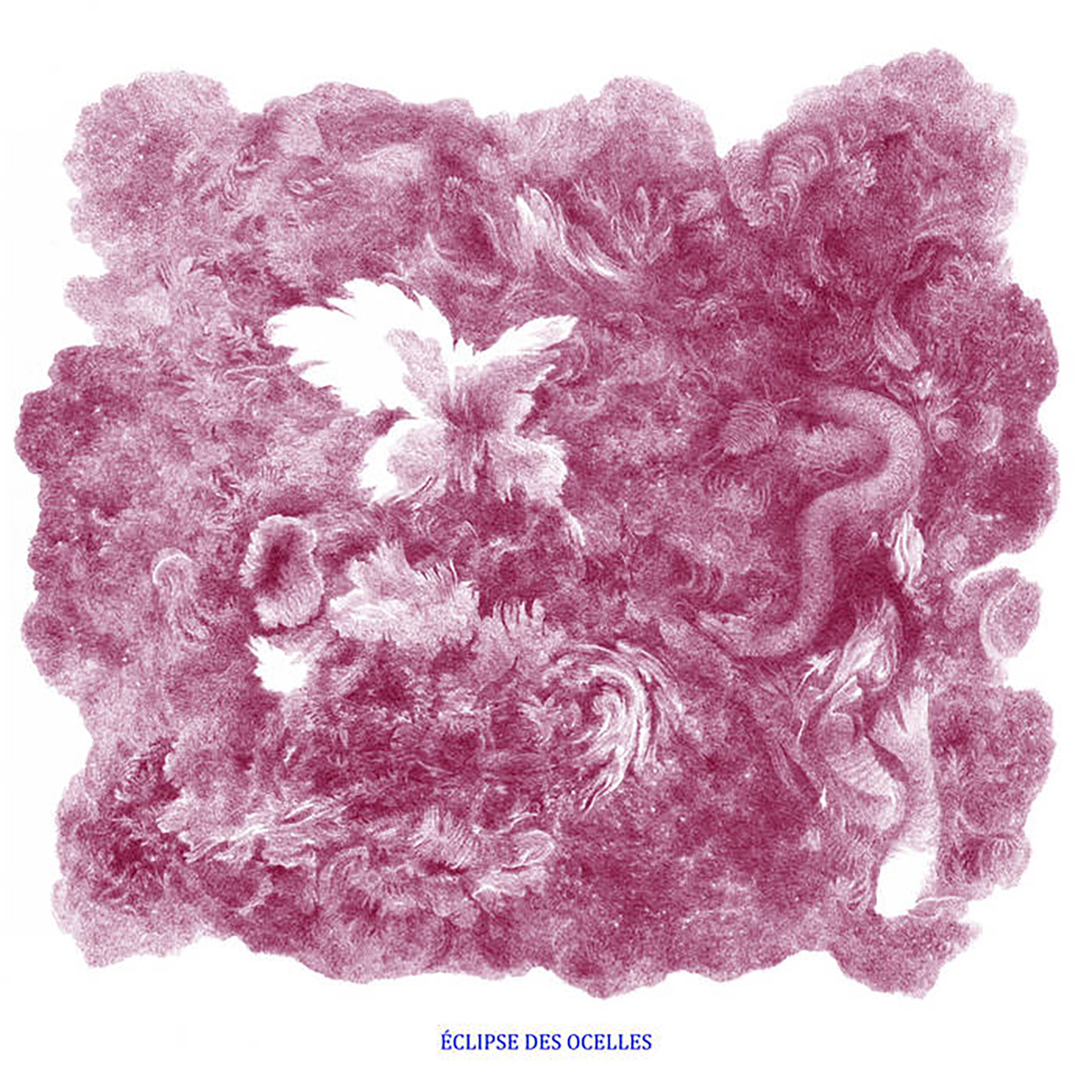
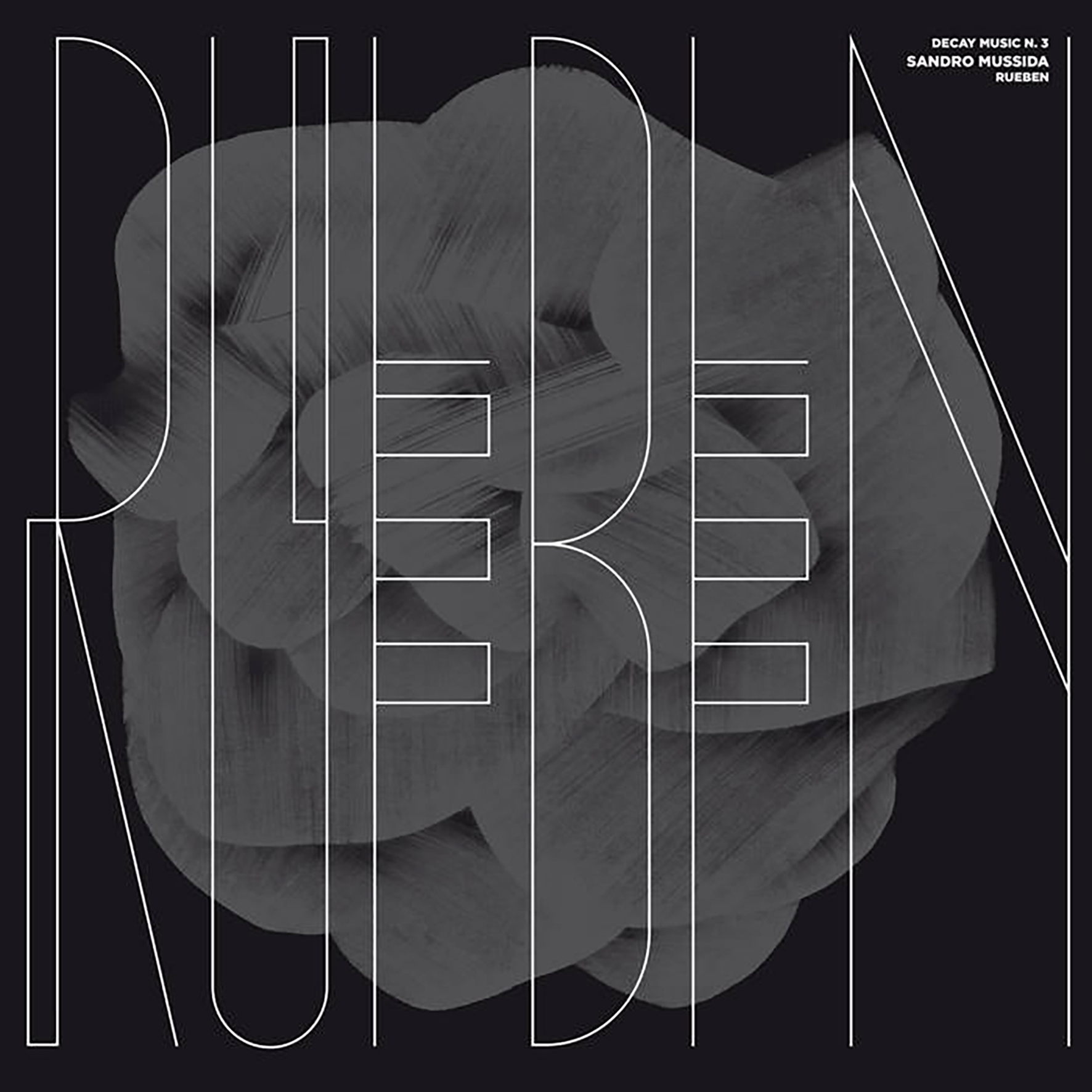 I believe this is my first encounter with this London-based cellist/composer, but that is hardly surprising, as Die Schachtel often tends to be ahead of the curve in unearthing compelling new sound art. As befits the Decay series' mission statement of highlighting "inspired contemporary experimental efforts in ambient, ethereal, and emotively abstract music," Reuben is an album of hazy, dreamlike soundscapes that feel like they were assembled from hissing and blurred tape loops (though I do not believe they were). Regardless of how it was assembled, this is quite an immersive and fitfully gorgeous album, as Mussida displays an impressive lightness of touch, talent for nuanced detail, and a deep understanding of the physics of sound. And it certainly does not hurt that he made full use of the rich acoustic properties of Volterra, Italy's historic Church of San Giusto.
I believe this is my first encounter with this London-based cellist/composer, but that is hardly surprising, as Die Schachtel often tends to be ahead of the curve in unearthing compelling new sound art. As befits the Decay series' mission statement of highlighting "inspired contemporary experimental efforts in ambient, ethereal, and emotively abstract music," Reuben is an album of hazy, dreamlike soundscapes that feel like they were assembled from hissing and blurred tape loops (though I do not believe they were). Regardless of how it was assembled, this is quite an immersive and fitfully gorgeous album, as Mussida displays an impressive lightness of touch, talent for nuanced detail, and a deep understanding of the physics of sound. And it certainly does not hurt that he made full use of the rich acoustic properties of Volterra, Italy's historic Church of San Giusto. I believe this is Di Domenico's first appearance on Die Schachtel, but the Brussels-based pianist/composer has had quite a prolific and fascinating career, racking up collaborations with a wildly varied array of iconic artists ranging from the ubiquitous Jim O'Rourke to free jazz sax titan Akira Sakata to Nigerian drum god Tony Allen. Given that pedigree, it is a bit of a surprise to see him turn up in a series of ambient albums, but the strange and eclectic Downtown Ethnic Music is too much of a freewheeling and hallucinatory experience to fit comfortably in that milieu (or any milieu at all, really). That said, the album is something of a spiritual (but not stylistic) descendant of Jon Hassell's "fourth world" vision, as Di Domenico set out to reimagine "the future of urban music" with a varied and eclectic host of collaborators. While I sincerely doubt the future of urban music will be anything like the kaleidoscopic and boundary-dissolving psychedelia of this album, Di Domenico has certainly managed to conjure up some truly unique and alien-sounding gems in the attempt.
I believe this is Di Domenico's first appearance on Die Schachtel, but the Brussels-based pianist/composer has had quite a prolific and fascinating career, racking up collaborations with a wildly varied array of iconic artists ranging from the ubiquitous Jim O'Rourke to free jazz sax titan Akira Sakata to Nigerian drum god Tony Allen. Given that pedigree, it is a bit of a surprise to see him turn up in a series of ambient albums, but the strange and eclectic Downtown Ethnic Music is too much of a freewheeling and hallucinatory experience to fit comfortably in that milieu (or any milieu at all, really). That said, the album is something of a spiritual (but not stylistic) descendant of Jon Hassell's "fourth world" vision, as Di Domenico set out to reimagine "the future of urban music" with a varied and eclectic host of collaborators. While I sincerely doubt the future of urban music will be anything like the kaleidoscopic and boundary-dissolving psychedelia of this album, Di Domenico has certainly managed to conjure up some truly unique and alien-sounding gems in the attempt.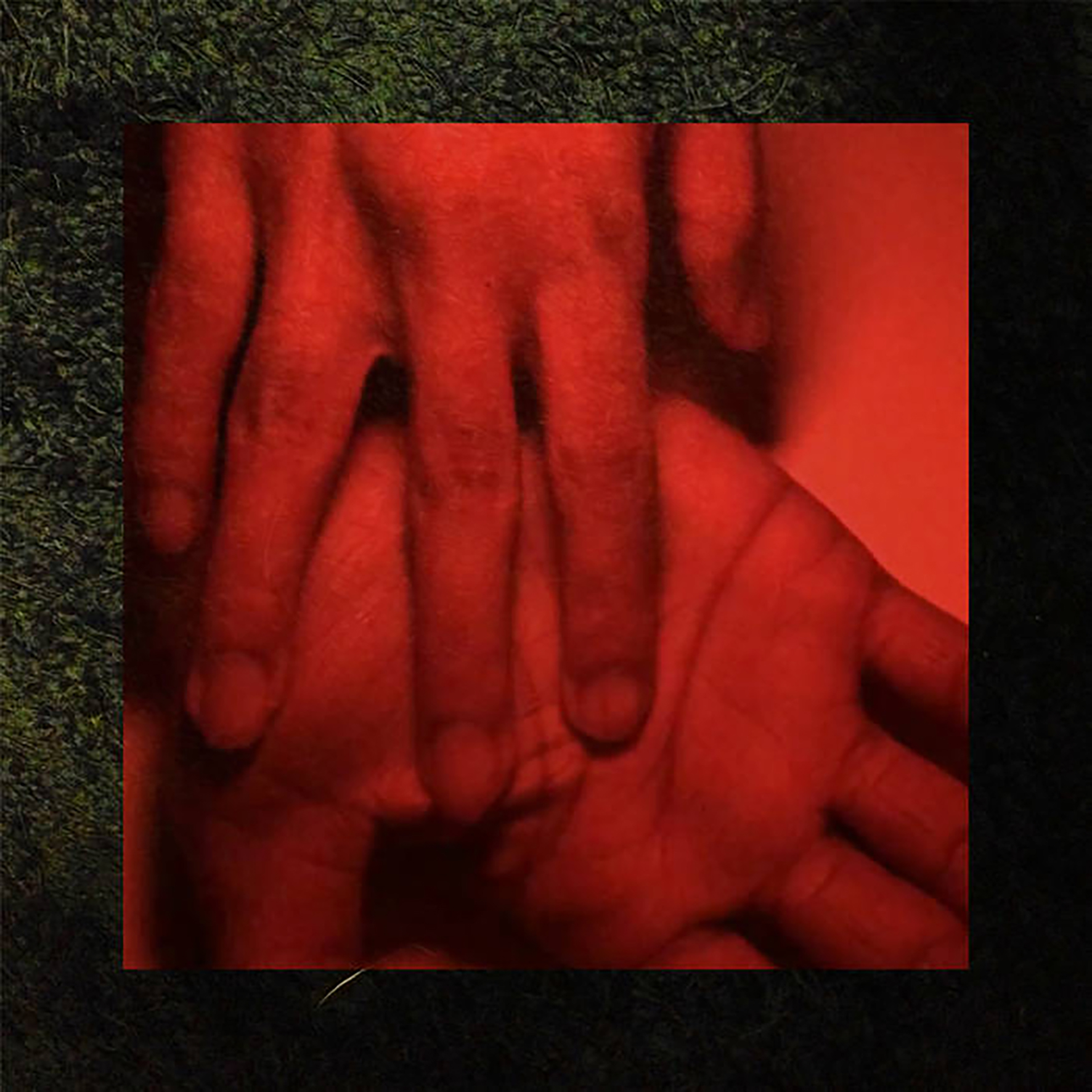 Four years in the making, this inaugural release from Brooklyn composer Nayar is something of a small, genre-blurring masterpiece that brings together stuttering, laptop-mangled melodies a la early Fennesz and Oval with billowing ambient warmth. Our Hands in the Dark is a bit more inventive and distinctive than a hazy and heavenly homage to the golden age of Editions Mego and Mille Plateaux, however, as it also features some unexpected nods to Rilke, classic Midwestern emo, and Indian mysticism along the way. To some degree, I am the target demographic for all of those things, but this album is wonderful primarily because of Nayar's oft-brilliant execution, as these eight songs are a veritable feast of exacting craftsmanship, tight songcraft, vivid textures, warm harmonies, and immersive atmospheres. If this album had come out twenty years ago, it likely would have become a regularly name-checked cornerstone of the laptop/experimental guitar scene. Since it is coming out now instead, I suppose it will just have to settle for the consolation prize of being an early contender for one of 2021's strongest debuts.
Four years in the making, this inaugural release from Brooklyn composer Nayar is something of a small, genre-blurring masterpiece that brings together stuttering, laptop-mangled melodies a la early Fennesz and Oval with billowing ambient warmth. Our Hands in the Dark is a bit more inventive and distinctive than a hazy and heavenly homage to the golden age of Editions Mego and Mille Plateaux, however, as it also features some unexpected nods to Rilke, classic Midwestern emo, and Indian mysticism along the way. To some degree, I am the target demographic for all of those things, but this album is wonderful primarily because of Nayar's oft-brilliant execution, as these eight songs are a veritable feast of exacting craftsmanship, tight songcraft, vivid textures, warm harmonies, and immersive atmospheres. If this album had come out twenty years ago, it likely would have become a regularly name-checked cornerstone of the laptop/experimental guitar scene. Since it is coming out now instead, I suppose it will just have to settle for the consolation prize of being an early contender for one of 2021's strongest debuts.
 In an unexpected flip for their second record, the duo of Eric Hardiman (Rambutan, Century Plants, Burnt Hills) and Michael Kiefer (More Klementines) improvised live. With the self-titled debut being the result of asynchronous file sharing and collaboration, First Encounters was exactly that: the first time the two had actually met in person in any context. That’s anything but apparent from the sound though, as the duo play off of each other perfectly, making for a free form trip through psychedelic spaces with the verve of long time collaborators, even though that is not the case.
In an unexpected flip for their second record, the duo of Eric Hardiman (Rambutan, Century Plants, Burnt Hills) and Michael Kiefer (More Klementines) improvised live. With the self-titled debut being the result of asynchronous file sharing and collaboration, First Encounters was exactly that: the first time the two had actually met in person in any context. That’s anything but apparent from the sound though, as the duo play off of each other perfectly, making for a free form trip through psychedelic spaces with the verve of long time collaborators, even though that is not the case.
